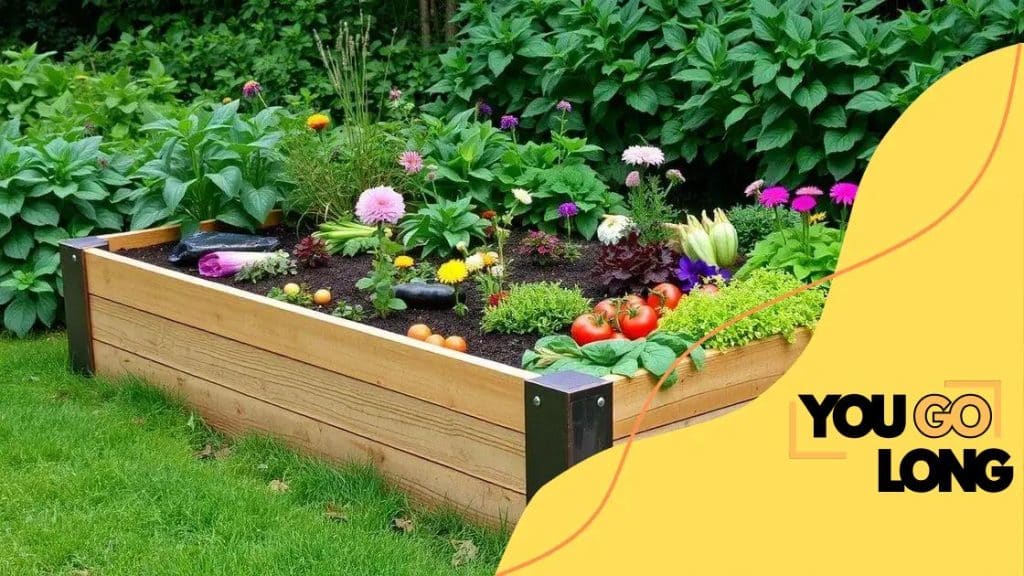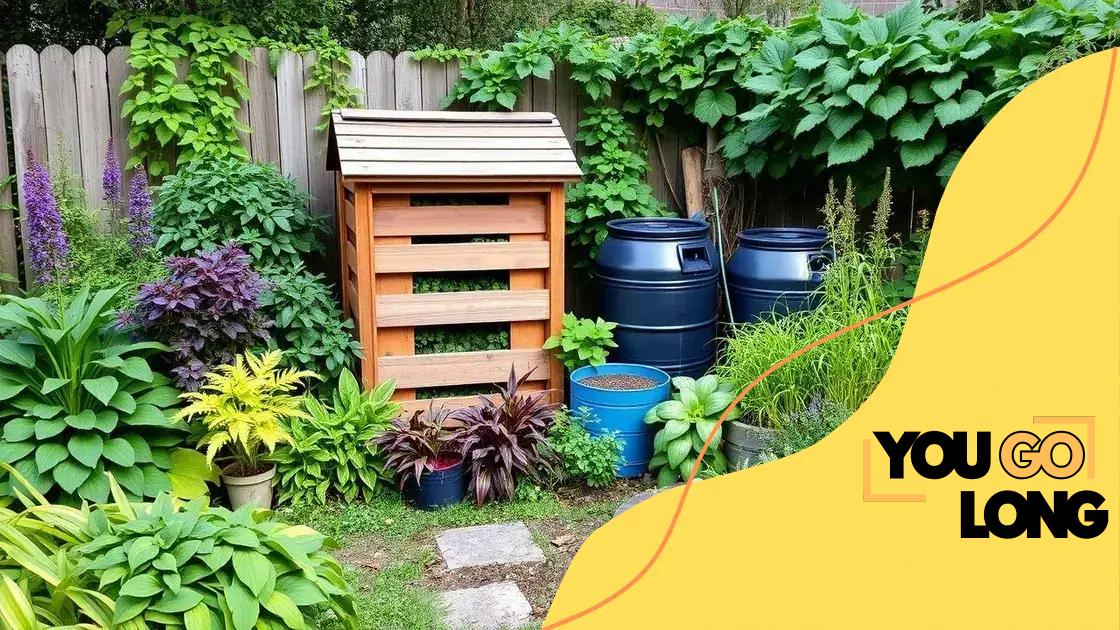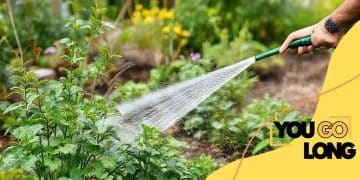The best DIY projects for making your home more sustainable

Advertisement
The best DIY projects for making your home more sustainable include using reclaimed materials, conserving water with rain barrels, and implementing energy-efficient fixtures to enhance eco-friendliness while improving your living space.
The best DIY projects for making your home more sustainable can not only enhance your living space but also contribute positively to the environment. Have you ever thought about how easy it can be to integrate sustainability into your home projects? Let’s dive into some exciting ideas that make a difference.
Understanding sustainability in home projects
Understanding sustainability in home projects is essential for creating a healthier environment. By incorporating sustainable practices, you can improve your home while also contributing to the planet’s well-being. Let’s explore how these practices work.
What is Sustainability?
Sustainability refers to meeting our own needs without compromising the ability of future generations to meet theirs. This means using resources wisely and responsibly. Every time you make a choice in your home, consider its impact on the environment.
Advertisement
Benefits of Sustainable Home Projects
Engaging in sustainable projects can provide numerous benefits. Here are a few:
- Lower energy bills through energy-efficient choices.
- Reduced waste by using recycled materials.
- Improved indoor air quality with non-toxic materials.
- Increased property value with eco-friendly upgrades.
As you approach home improvement, always think about the materials you are using. For instance, switching to energy-efficient appliances can significantly reduce your energy consumption. Using recycled materials not only lessens waste but can also add unique character to your space.
Another important aspect of sustainable home projects is water conservation. Simple changes, like installing low-flow showerheads or fixing leaks, can lead to substantial savings on your water bill and in your environmental impact. Every drop counts!
Advertisement
Implementing Sustainable Practices
You can start small. Consider indoor plants that improve air quality and create a calming space. Using natural light to brighten your home reduces the need for artificial lighting and enhances your mood.
As you continue your journey toward sustainability, keep learning and adapting your practices. It’s about making choices that align with your values while improving your living environment.
Top DIY projects for energy efficiency
Top DIY projects for energy efficiency can significantly lower your utility bills and reduce your environmental impact. A few small changes can create a big difference in your energy use.
Sealing and Insulation
Sealing gaps in windows and doors can prevent heating and cooling loss. Use weatherstripping or caulk to fill in those spaces. Proper insulation helps maintain your home’s temperature, keeping it cozy in winter and cool in summer.
Energy-Efficient Lighting
Switching to LED bulbs is a smart move. These bulbs use less energy and last longer than traditional incandescent ones. You can drastically reduce your lighting costs with just this simple switch.
- Install dimmer switches to control brightness.
- Use timers or smart controls to manage lighting automatically.
- Consider solar-powered outdoor lighting for added savings.
Another option is to use natural light. Opening curtains during the day brightens your home without the added cost of electricity. This not only enhances your mood but also saves energy.
Appliance Upgrades
Replacing old appliances can lead to substantial energy savings. Look for those with the Energy Star label. These appliances consume less energy while providing the same or better performance.
Consider projects like installing a programmable thermostat. This device adjusts your home’s temperature based on your schedule, helping you save energy when you’re away. Simple adjustments to your habits can also help.
Regular maintenance of your heating and cooling systems ensures they operate efficiently. Clean or replace filters as needed to improve performance.
Water-Saving Improvements
Installing low-flow faucets and showerheads can reduce your water usage significantly. This small change not only helps the environment but also lowers your water bill.
Creating a rainwater collection system is another project that can save water and energy. Use the collected water for irrigation, reducing the need for municipal water.
Creating a sustainable garden at home

Creating a sustainable garden at home allows you to enjoy fresh produce while benefiting the environment. With a few simple techniques, you can turn your outdoor space into an eco-friendly oasis.
Choosing Native Plants
Start by selecting native plants for your garden. These plants are adapted to your local climate and require less water and maintenance compared to non-native species. They also provide important habitat for local wildlife, including pollinators.
Composting for Healthy Soil
Another important aspect of a sustainable garden is composting. By turning kitchen scraps and yard waste into nutrient-rich compost, you can enrich your soil naturally. This reduces the need for chemical fertilizers and helps retain moisture when watering.
- Set up a compost bin in your yard or use a compost tumbler for easy access.
- Include a mix of greens (like vegetable scraps) and browns (like leaves or cardboard).
- Aerate your compost regularly to speed up the decomposition process.
Regularly adding compost to your garden beds fosters healthy plant growth and improves soil structure.
Implementing Water-Saving Techniques
Water conservation is key to a sustainable garden. Consider installing rain barrels to collect and utilize rainwater for irrigation. This simple solution can drastically reduce your water consumption.
Using mulch in your garden beds also helps retain moisture, reduces weeds, and adds organic matter to the soil as it breaks down. Choose organic mulches like wood chips or straw to enhance sustainability.
Planting a Vegetable Garden
Growing your own vegetables is another way to make your garden more sustainable. Start with easy-to-grow crops like tomatoes, peppers, and herbs. This not only produces fresh food but also cuts down on carbon emissions associated with transporting food.
Practice crop rotation to maintain soil health and prevent pests. This technique ensures that different plants are grown in the same area each year, minimizing the risk of soil degradation.
Repurposing materials for eco-friendly decor
Repurposing materials for eco-friendly decor not only saves money but also reduces waste. By using items you already have, you can create unique and personalized pieces that enhance your home.
Using Reclaimed Wood
Reclaimed wood is a fantastic material for decor. It adds character and warmth to any space. You can create furniture, like tables or shelves, or use it for decorative wall art. The rustic charm of reclaimed wood makes it a popular choice for many homeowners.
Upcycling Glass Containers
Glass containers, like jars, can be transformed into beautiful home decor. You can paint them, fill them with fairy lights, or use them as vases for flowers. This not only gives a new life to the containers but also adds a lovely touch to your decor.
- Use jars as candle holders for a cozy atmosphere.
- Decorate with twine or ribbon for a personal touch.
- Create a terrarium using small indoor plants.
Additionally, old bottles can serve as stylish vases or even unique lighting fixtures when combined with string lights.
Repurposing Fabrics
Old clothes or fabric scraps can also be used creatively. Consider making throw pillows or wall hangings. You can stitch together fabric remnants to create colorful quilts or patchwork designs.
Another idea is to use fabric to cover old furniture, giving it a fresh look without the need to buy new items. This reduces waste and can result in one-of-a-kind pieces.
Transforming Pallets and Crates
Pallets and crates can be turned into functional decor items. With some creativity, you can transform a pallet into a coffee table or a garden planter. It’s an environmentally friendly option that avoids the need for new materials.
By getting creative with these items, you can furnish your home with distinctive pieces that tell a story. Using repurposed materials reflects your personality while being kind to the environment.
Water conservation tips for your DIY projects
Water conservation is essential for a sustainable lifestyle. When working on your DIY projects, incorporating water-saving techniques can help reduce waste and lower your bills.
Choosing Low-Flow Fixtures
One of the easiest ways to conserve water is by installing low-flow fixtures. These include showerheads, faucets, and toilets designed to use less water while maintaining good pressure.
Implementing Rainwater Harvesting
Consider setting up a rainwater harvesting system. Collecting rainwater can provide an eco-friendly source for watering your garden and washing your car. With rain barrels, you can capture runoff from your roof and use it for your outdoor needs.
- Install a filter to keep debris from clogging your system.
- Use a spigot for easy water access.
- Ensure your barrels are covered to prevent mosquito breeding.
This simple project not only saves water but also helps reduce stormwater runoff.
Creating a Drip Irrigation System
If you like gardening, setting up a drip irrigation system is a worthwhile DIY project. Unlike traditional sprinklers, drip systems deliver water directly to the plant roots, minimizing evaporation and runoff.
Use soaker hoses or drip lines to provide efficient hydration to your plants. This method ensures that every drop counts and can greatly improve your garden’s water efficiency.
Checking for Leaks
Regularly inspect your plumbing for leaks, which can waste significant amounts of water. Even a small leak can add up over time. Check faucets, showerheads, and irrigation systems. Fixing leaks promptly can save you both water and money.
Incorporating these simple water conservation techniques into your DIY projects can lead to long-term benefits for both your wallet and the environment. By making small adjustments in your projects, you contribute to a sustainable future.
The conclusion emphasizes how small efforts in DIY projects can significantly impact sustainability. By integrating eco-friendly practices such as using reclaimed materials, conserving water, and creating energy-efficient spaces, you not only enhance your home but also contribute positively to the environment. Employing these strategies allows you to enjoy a beautiful living space while ensuring a greener future for everyone. Embrace the idea that sustainable living is achievable and rewarding!
FAQ – Frequently Asked Questions About Sustainable DIY Projects
What are some easy DIY projects for water conservation?
Some easy projects include installing low-flow fixtures, creating a rainwater harvesting system, and setting up a drip irrigation system for your garden.
How can I repurpose materials for home decor?
You can use reclaimed wood for furniture, upcycle glass jars into vases, and transform old clothes into decorative pillows or quilts.
What are the benefits of using native plants in my garden?
Native plants require less water and maintenance, provide habitat for local wildlife, and can help reduce the need for chemical fertilizers.
How does composting contribute to a sustainable garden?
Composting turns kitchen scraps and yard waste into nutrient-rich soil, reducing landfill waste and providing natural fertilizers for your plants.





